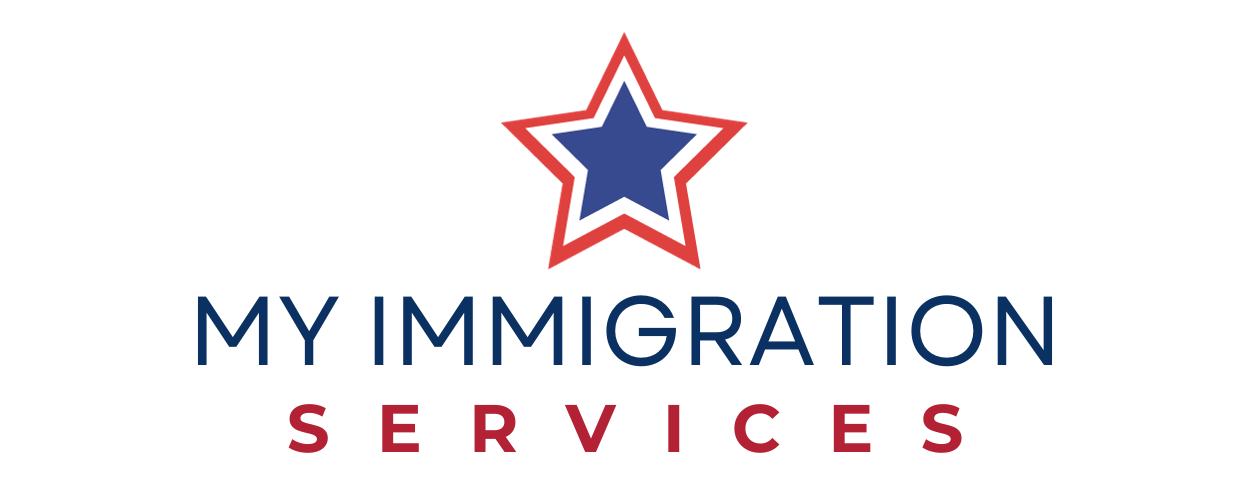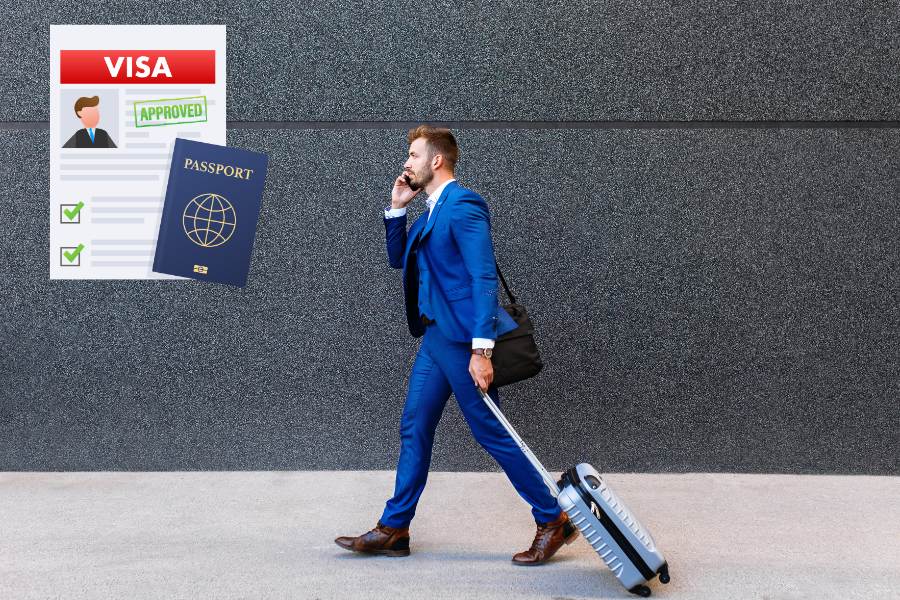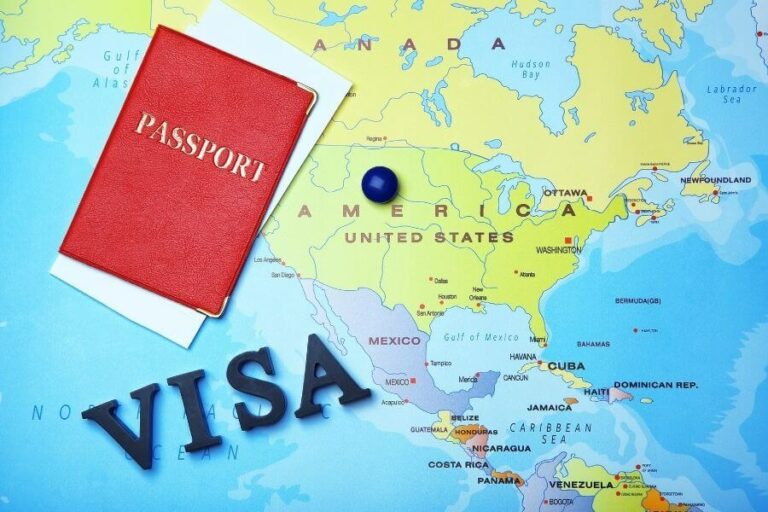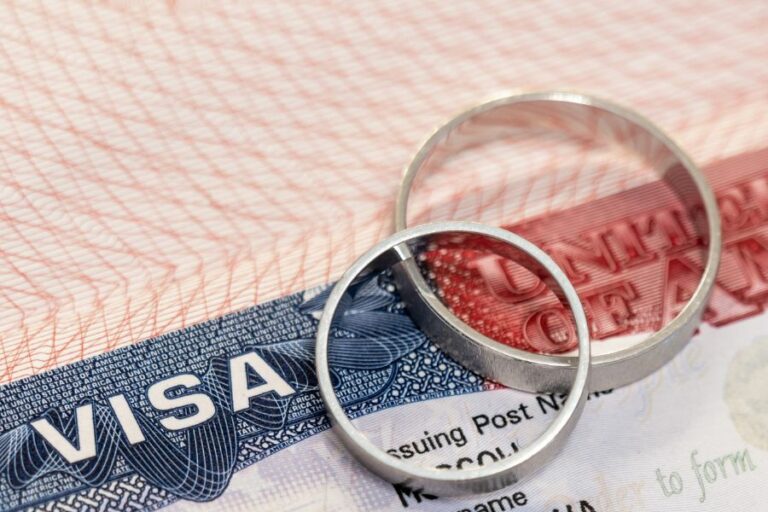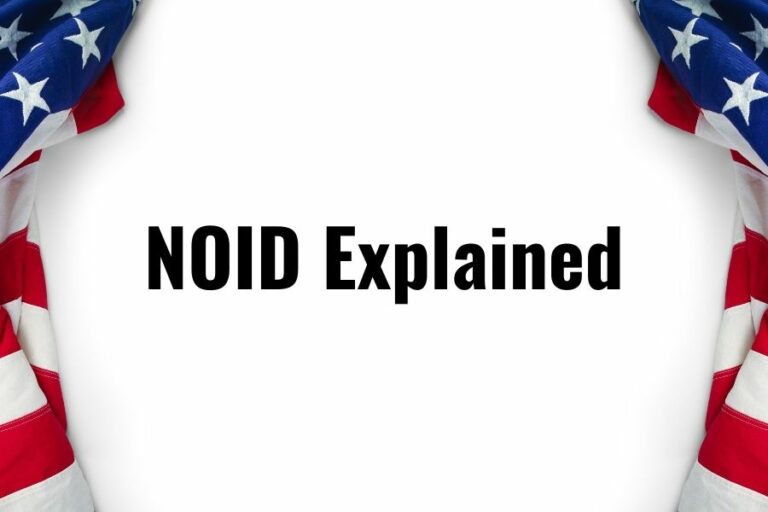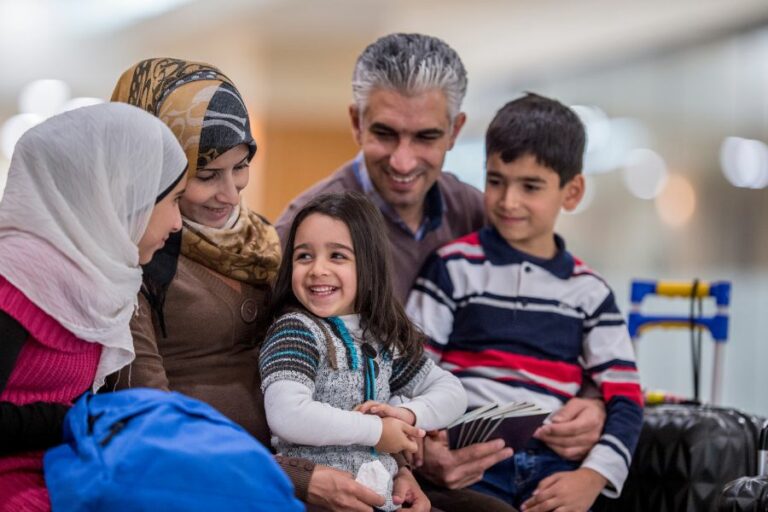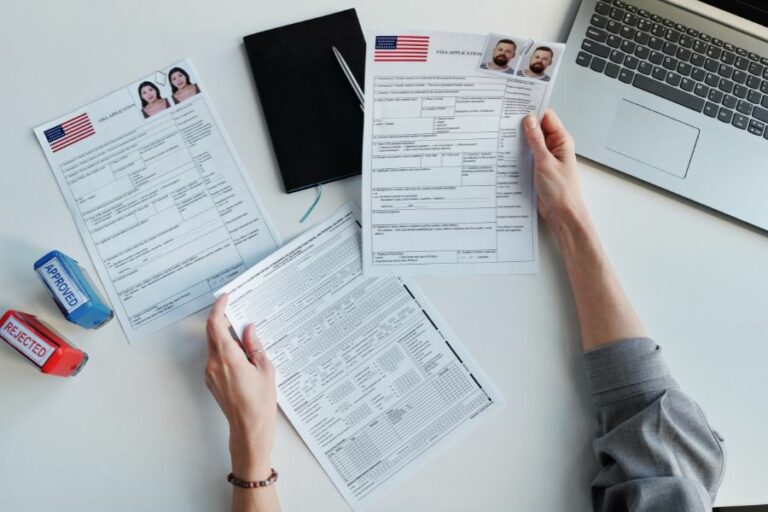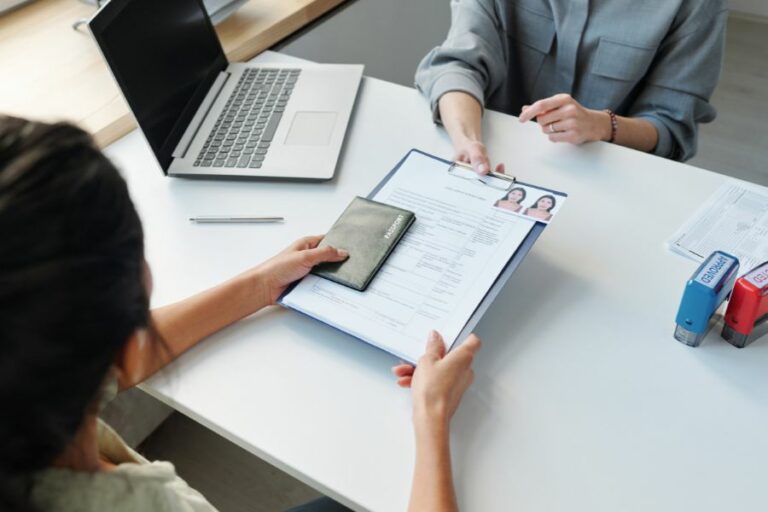B-1 Visa for Business Vistors, Explained
A B-1 visa is a non-immigrant visa issued by the United States for foreign citizens who wish to enter the U.S. for temporary business purposes. The B-1 visa is commonly referred to as a “business visitor” or “visitor for business” visa.
In order to apply for a B-1 visa, applicants typically need to demonstrate the purpose of their trip, intent to depart the U.S. after their visit, and ability to financially support themselves during their stay without working in the U.S.
It’s important to note that holders of a B-1 visa are not allowed to work in the U.S. or receive payment from a U.S. source. However, in March 2023, U.S. Citizenship and Immigration Services (USCIS) announced searching for employment and interviewing for a position are acceptable B-1 or B-2 activities1.
Note: The B-2 (tourist) visa is for tourism, vacation, or visiting friends and family.
Acceptable Purposes for B1 Visitor Visa Travel
It’s crucial to ensure that any activities undertaken while in the U.S. on a B-1 visa are within the permitted scope, such as:
- Business-related consultations: Engaging in meetings, discussions, or negotiations with business partners in the U.S.
- Presence at conferences or seminars: Participating in scientific, educational, professional, or business events.
- Negotiation of contracts: Engaging in discussions or finalizing agreements with a U.S.-based entity.
- Professional licensure and examinations: Attending specific licensing or testing procedures available only within the U.S.
- Short-term training: Participating in non-credit training or skill-enhancement sessions, not leading to employment.
- Real estate acquisitions for business: Conducting transactions involving property purchase for commercial investment or business operations.
- Estate transactions: Managing legal affairs related to inherited assets or property in the U.S.
All in all, you just need to ensure the purpose of your trip is to enter the United States for business of a legitimate nature2.
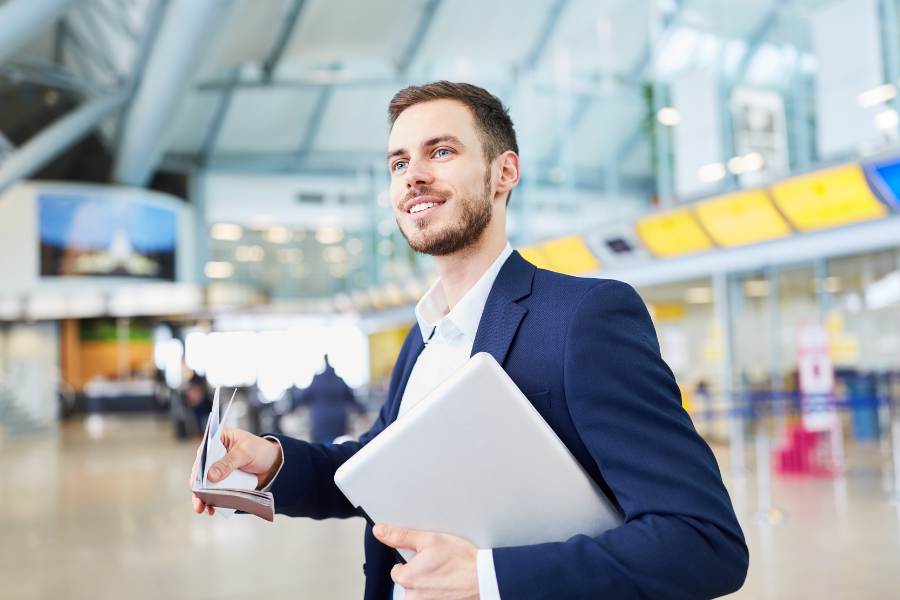
B-1 Visa Requirements & Eligiblity
Here are the general requirements for getting a B-1 visa:
Purpose of Your Trip
You must demonstrate that the purpose of your trip is for a legitimate business activity. It shouldn’t involve receiving payment or salary from a U.S. source (with some exceptions).
Duration of Stay
You should clarify that your stay in the U.S. is temporary and for a specific, limited period.
Financial Support
Provide proof that you have sufficient funds to cover your expenses while in the U.S. This might include bank statements, payslips, or other financial documents.
Ties to Home Country
Prove that you have compelling ties that will ensure your return to your home country after your visit. This could be in the form of family ties, a job, property, etc.
The idea is to show that you have reasons to return home and won’t stay in the U.S. indefinitely.
Passport
Your passport should be valid for at least six months beyond your planned period of stay in the U.S., unless exempted by country-specific agreements.
Photo
You will typically need a passport-style photo that meets the specific requirements set by the U.S. Department of State.
Non-immigrant Visa Application
You must fill out Form DS-160, Online Non-immigrant Visa Application.
Once the DS-160 is completed, you’ll get a confirmation page with a barcode that you should print and bring to your visa interview.
Payment: You’ll need to pay the non-refundable visa application fee, if required, for your nationality.
Schedule and Attend a Visa Interview
Visa applicants (with some age-specific exceptions) typically need to undergo an interview at the U.S. embassy or consulate in their country.
Additional Documentation
Depending on the consulate or embassy, you might be required to provide additional documentation. For instance:
-
- Details of your business or professional ties in the U.S.
- A letter from your employer detailing the purpose and nature of the trip.
- Business associates or contacts in the U.S. may also provide letters of invitation.
How to apply for a B-1 visa?
Applying for a B-1 visa involves several steps. Here’s a general overview of the process:
- Complete the DS-160 Form:
- Fill out the Online Nonimmigrant Visa Application (DS-160) accurately.
- You’ll also have to upload a digital photo of yourself that meets government requirements.
- Print the confirmation page after submitting the form.
- Pay the Visa Application Fee:
- After submitting the DS-160, pay the required Machine-Readable Visa (MRV) fee. This fee is mandatory for processing your application.
- Save the receipt or proof of payment, as you will need it for the next steps.
- Schedule Your Visa Interview:
- Once the payment is confirmed, schedule your visa interview appointment at the U.S. Embassy or Consulate or online using the website provided by the U.S. embassy or consulate in your country. The confirmation of the MRV fee payment is typically required to book the appointment.
- Gather Required Documents:
- Compile all necessary documents, including your passport, DS-160 confirmation page, MRV fee payment proof, photo, and any additional documentation that supports your application.
- Attend Your Visa Interview:
- Go to the U.S. Embassy or Consulate on the date and time of your visa interview.
- Answer all questions honestly and be prepared to provide details about your travel plans and ties to your home country.
- Digital fingerprint scans are usually conducted at the time of the interview. Following the interview, the consular officer might ask for more documents or details to conclude their assessment of your situation.
- Pay the Visa Issuance Fee (if applicable):
- If your visa is approved and your country has a visa issuance fee (reciprocity fee), you will need to pay this fee after the visa interview.
- Receive Your Visa:
- Upon approval, you’ll receive information on when and how your passport with the visa will be returned to you.
It’s essential to always check the specific requirements and guidelines set by the U.S. embassy or consulate in your country, as there may be variations or additional requirements based on your nationality or specific circumstances.

Required Documents for B-1 Business Visa (Checklist)
Once you’ve set up your visa interview, you’ll get further guidelines from the respective embassy or consulate regarding the documents they require. However, here’s a list of documents typically needed for most travel visa interviews:
B-1 Visa Costs
Here are the details associated with the costs of obtaining a B-1 visa:
| Visa Application Fee (MRV Fee) | $185.00 |
| Visa Issuance Fee (Reciprocity Fee) | Depends and varies based on applicant’s country |
| Passport Photos | Depends and varies based on applicant’s country |
Can a U.S. sponsor pay for your B1 Visa? Yes, a person residing in the U.S. can undertake the financial responsibilities for a visitor applying for a B1 (and B2) visa. To do so, the sponsor must demonstrate financial stability, confirming they can support the visitor’s expenses throughout their stay in America. This is accomplished by completing the I-134 “Affidavit of Support” form. The sponsor should submit Form I-134 early in the visa application process to ensure all documents are ready promptly.
B-1 Visa Processing Time
The wait time for a B-1 visa mainly comes down to the visa interview appointment. The average wait time for a B-1 visa interview ranges from a couple of weeks to 2 months.
To find out the wait time for your particular embassy or consulate, input your city into this convenient State Department tool in the “Appointment Wait Time” section.
Be aware that if you’re scheduling an interview in a country that is not your place of origin, you might face extended wait times.
Here’s an overview of the processing time for a B1 visa by stages of the application process:
| Stage | Time Frame |
|---|---|
| DS-160 Form Submission | After completing the DS-160 online, immediate confirmation is received. |
| Visa Appointment Wait Time | Post visa fee payment, you’ll book an interview. Appointment wait times differ: some places offer dates within days, while others may require weeks or months. |
| Visa Processing Time Post-Interview | Direct approval leads to receiving the passport with the B-1 visa stamp within days to two weeks. If “administrative processing” is need, delays can span several months due to reasons like security checks or missing documents. |
Factors Influencing Processing Time:
- The volume of applications at the specific U.S. embassy or consulate.
- The applicant’s nationality or background, which might lead to more extended security checks.
- Any missing documentation or errors in the application can result in delays.
It’s always a good idea to apply for your B-1 visa well in advance of your intended travel date to account for any potential delays.
Additionally, checking the U.S. embassy or consulate website where you plan to apply can provide specific information about current wait times for appointments and visa processing for that location.
Are there annual limits for B1 visas? The B-1 visa does not have an annual cap or limit. Unlike certain other visa categories, such as the H-1B, which have annual quotas, the B-1 visa is issued based on the applicant’s qualifications and the purpose of the visit, rather than a numerical limit.
B-1 Visa Validity, Entries & Duration of Stay
| Validity | Up to 10 years |
| Entries | Single-entry visa allows you to enter the U.S. only once within the period when your visa is valid. Once you leave the U.S., you cannot re-enter on that same visa. Multiple-entry visa allows you to enter the U.S. numerous times as long as your visa is valid. |
| Duration of Stay | Up to 6 months, determined by the Customs and Border Protection (CBP) officer at the port of entry. |
While B-1 visas may be valid up to 10 years, visitors on B-1 will only be permitted to stay in the United States for a short duration (maximum 6 months), as granted by US Customs and Border Protection upon arrival, which is why you need to be clear about your intended stay with the CBP officer upon arrival. Upon entry into the U.S., you will receive an I-94 Arrival/Departure Record, either as a paper card or electronically. This record will state the date by which you must depart the U.S. It’s essential to adhere to the length of stay specified on your I-94 to avoid potential complications or bans from future travel to the U.S.
B-1 Visa Extensions
If you are nearing the end of your permitted stay in the U.S., then you may wish to extend it, especially since there can be future consequences if you stay in the U.S. longer than you were allowed to.
If you have a legitimate reason to extend your stay beyond the date indicated on your I-94, you may file a request with U.S. Citizenship and Immigration Services (USCIS) using Form I-539, Application to Extend/Change Nonimmigrant Status. It’s crucial to apply for an extension well before the expiration date on your I-94 to avoid potential issues. If approved, it’s possible to get an extension of up to another 6 months.
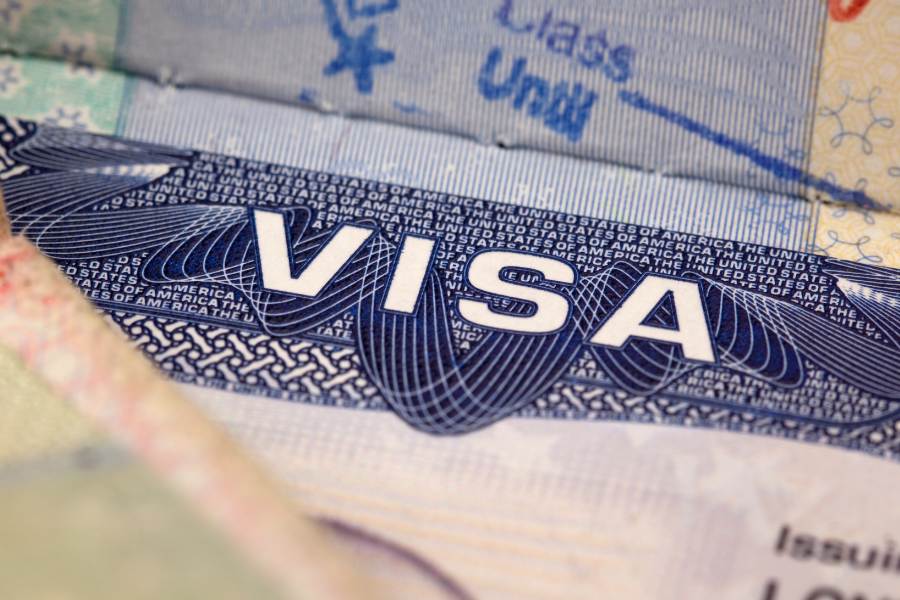
B-1 Visa FAQs
Overstaying your B-1 visa leads to immediate visa cancellation and accrual of “unlawful presence.” If you overstay by more than 180 days, you face a three-year re-entry bar; over one year, a ten-year bar. You generally can’t extend your visa or change your status post-overstay, and you risk deportation and complications in future U.S. visa applications. It’s crucial to adhere to the I-94 form’s exit date to avoid these serious consequences.
While your family can join you in the U.S., they must obtain separate visas (typically B-2 tourist visas). Their application process will mirror yours, requiring a DS-160 form, an interview, and relevant documentation.
No, the B-1 visa is a business visitor visa, and holders of this visa are generally not allowed to engage in gainful employment in the U.S. This means you cannot work for a U.S. employer or receive a salary from a U.S. source. However, in March 2023, USCIS stated B-1 visa holders can apply for jobs and attend job interviews. If you intend to work in the U.S., you’ll need to apply for a work visa appropriate for your situation, such as an H-1B visa for specialized occupations or an L-1 visa for intra-company transfers.
No, the B-1 visa, often referred to as a Business Visitor Visa, does not directly lead to permanent residency (also known as obtaining a Green Card). The B-1 visa is intended for individuals such as business professionals who need to engage in commercial transactions, attend business meetings or conferences, settle estates, or negotiate contracts in the United States, among other temporary business activities.
If you would like to renew your B-1/B-2 visa, then you will need to go through the original process. Depending on the U.S. embassy or consulate where you apply, you may be able to complete your visa renewal without the need for an interview.
A common misconception about the B-1 visa process is that in order to be approved, you must provide proof of a certain amount of funds in your bank account. Although financial considerations are one aspect of the B-1 process, and the consular officer may check to see if you are able to support yourself financially during your time in the U.S., there is no minimum required amount of funds that need to be met. That said, if asked, you’ll need to show enough money to fully cover your trip, which includes any family members with you.
A visa number, also known as a visa foil number, is a red number that is generally printed on the bottom right side of newer visa documents. In the context of a U.S. B1 visa (a type of visa typically used for business-related travel), the visa number is a unique identifier that the U.S. Department of State assigns to a specific visa issued to an individual.
As a B1 visa holder, you can travel to all 50 states, the District of Columbia, and U.S. territories.
References:
